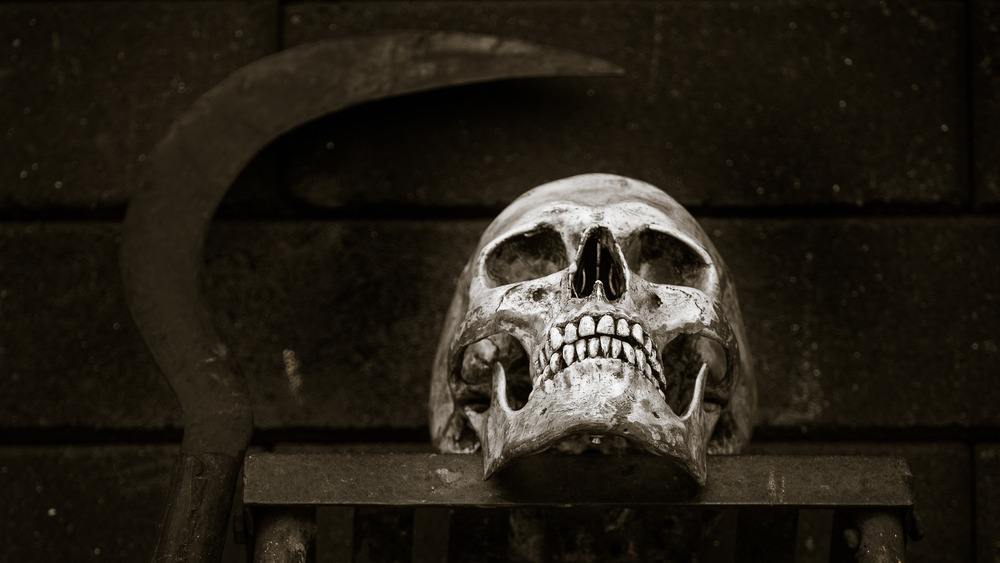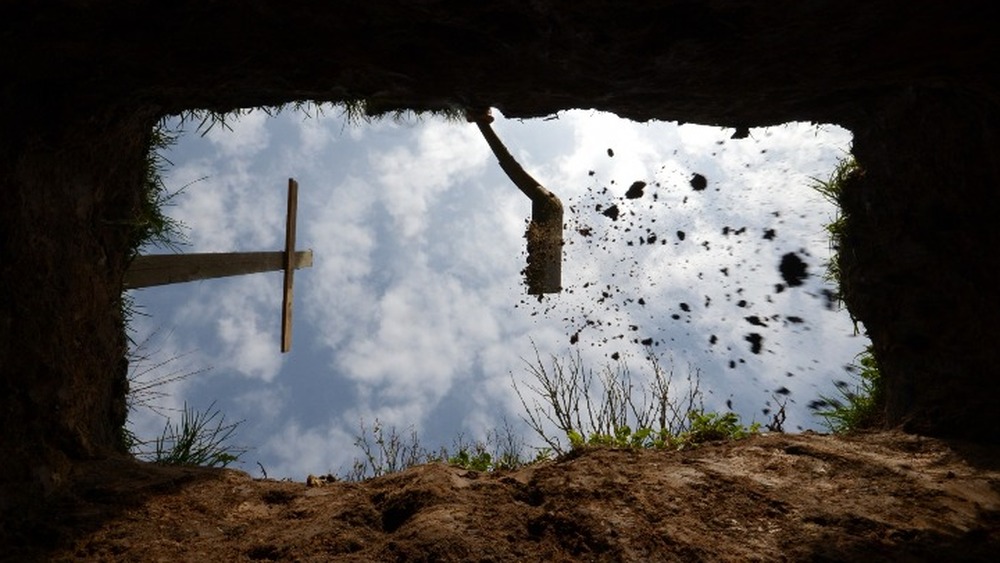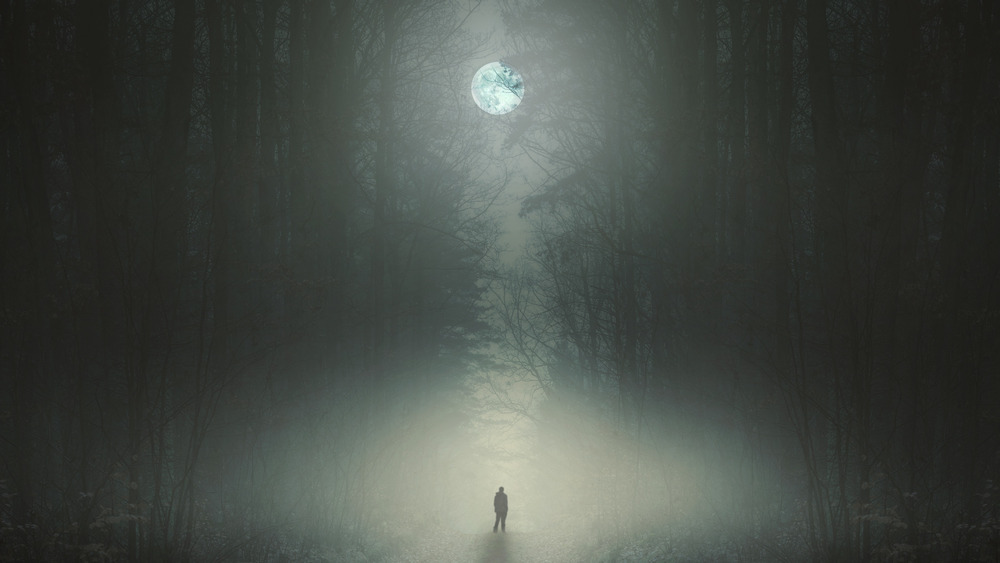The Truth About The 'Demon Burials' Of Poland
Long before author Bram Stoker assembled various inspirations – Vlad the Impaler, Nosferatu, European folklore — into his single, codified "vampire" creature in 1897's Dracula, legend had circulated for centuries regarding the undead. Strega ("witch") roamed Italy, nachzehrer ("after devourer") tormented Germany, draugr ("again walker") roved Iceland, and strigoi ("troubled spirit") haunted Romania. For hundreds, if not thousands of years, people were very much concerned that the dead stay dead, and each and every region of modern-day Europe, Scandinavia, Britain and more held collections of tales that reflected such fears.
In the town of Kring, Istria (modern-day Croatia), 17th-century stonecutter Jure Grando apparently rose from the dead to terrorize his once-living friends and relatives, including sexually assaulting his wife, before being impaled with a wooden stake, as Total Croatia News explains. In Sozopol, Bulgaria, a 700-year old skeleton was found stabbed through the chest with an iron rod, and its teeth removed, as National Geographic tells us. An 16th-century elderly woman in a mass grave near Venice was found with a rock shoved in her mouth (an exorcism technique used on vampires), again per National Geographic. Such actions often coincided with rises in plagues, or were otherwise inspired by fluids creeping from human orifices after death, as Scientific American explains.
Pope Benedict XIV (1675-1758 CE) stated that vampires were "fallacious fictions of human fantasy," and Hapsburg ruler Maria Theresa (1717-1780 CE) declared such beliefs "superstition and fraud," but it didn't matter: the myths were more enchanting or believable than reality.
Sickles across the throat to coerce the dead to stay dead
An archaeological find in Poland in 2008 adds another dimension to our collective vampire lore. Nearly 300 graves were found in Drawsko, a county in the northwest, at a burial site dating back to the Bronze Age (~3,200-600 BCE), as Live Science explains. As recently as the 18th century people had been interred at this site, but it's the bodies from the 16th-17th century that provide us a glimpse into folklore and beliefs surrounding vampires, particularly of the Slavic vein.
Six graves stand out among the bunch, including a man aged 35-44, a women 35-39, an elderly woman with no teeth and a coin in her mouth, a teenage girl with a copper coin and, of all things, a copper headband still gripping her skull. All of them were buried with sickles, those curved and bladed farm tools used to reap grain and grasses. Some of the sickles lay across their throats, and some near the hip.
A sickle across the throat certainly looks like a threatening gesture, at least to us, and when taking other archaeological evidence into account, particularly Charon's Obol (the coin in the mouth), it indeed seems like these individuals were being coerced to stay dead. Whether it was believed they were "witches" who had partaken in unholy pacts, would-be undead, or upiór (the modern Polish term for a traditional "vampire" creature, or "upierz," per the Adam Mickiewicz Institute), is ultimately unknown.
Not evil, but needing protection from evil
Of course, snap judgments are rarely good ones, and projecting the perspectives of the present onto ancient people is a good way to end up with a completely biased historical record. In the journal Antiquity, published by Cambridge University Press, a 2015 article titled "Buried with sickles: early modern interments in Drawsko, Poland" offers a different perspective on the whole "demon burials" find in 2008.
The argument is this: The individuals buried with sickles weren't believed to be vampires, but were in need of protection from evil. The article states, "We deliberately dismiss the interpretation of a revenant (i.e. vampire)," and goes on to interpret the graves as indicative of a larger set of traditions meant to deter malicious, otherworldly — demonic, if you will — forces from encroaching on the living or the dead, even the dead's spirits. "Vampires" are just one specific, relatively modern and biased, description of what formerly were a much more vague vision of "evil" entities. Slavic folk rituals persisted in the region into the modern, Christian era, but it's also important to note that the individuals in question received full, honored, Christian burials not afforded to those believed to be in league with malevolent forces.
In a more general sense, the sickles may merely be symbols for how "the deceased was perceived within their community," or even more abstract, "the use of a tool made of iron, which had to undergo a transformation in fire, could symbolize the passage from life to death."


